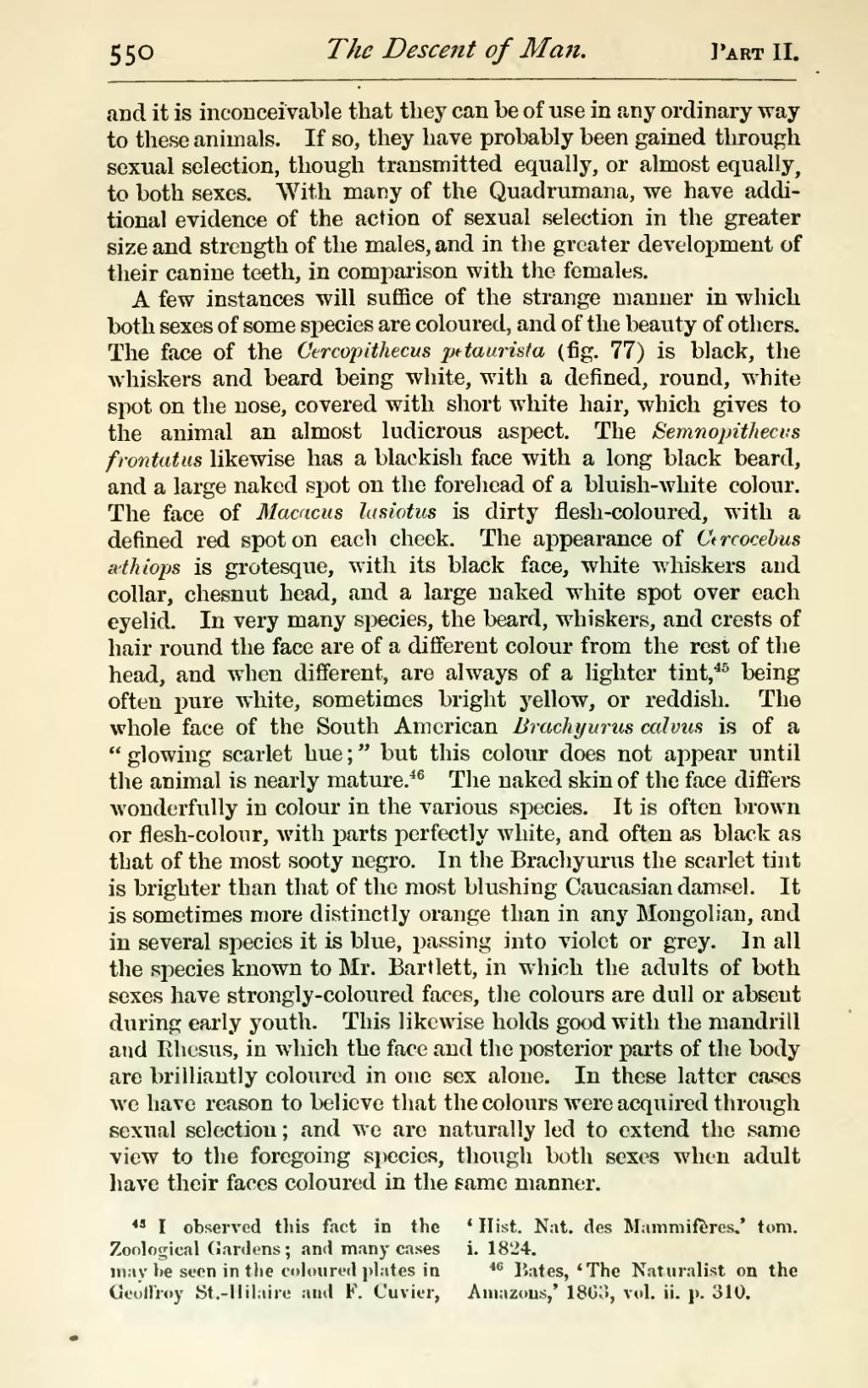and it is inconceivable that they can be of use in any ordinary way to these animals. If so, they have probably been gained through sexual selection, though transmitted equally, or almost equally, to both sexes. With many of the Quadrumana, we have additional evidence of the action of sexual selection in the greater size and strength of the males, and in the greater development of their canine teeth, in comparison with the females.
A few instances will suffice of the strange manner in which both sexes of some species are coloured, and of the beauty of others. The face of the Cercopithecus petaurista (fig. 77) is black, the whiskers and beard being white, with a defined, round, white spot on the nose, covered with short white hair, which gives to the animal an almost ludicrous aspect. The Semnopithecus frontatus likewise has a blackish face with a long black beard, and a large naked spot on the forehead of a bluish-white colour. The face of Macacus lasiotus is dirty flesh-coloured, with a defined red spot on each cheek. The appearance of Cercocebus æthiops is grotesque, with its black face, white whiskers and collar, chesnut head, and a large naked white spot over each eyelid. In very many species, the beard, whiskers, and crests of hair round the face are of a different colour from the rest of the head, and when different, are always of a lighter tint,[1] being often pure white, sometimes bright yellow, or reddish. The whole face of the South American Brachyurus calvus is of a "glowing scarlet hue;" but this colour does not appear until the animal is nearly mature.[2] The naked skin of the face differs wonderfully in colour in the various species. It is often brown or flesh-colour, with parts perfectly white, and often as black as that of the most sooty negro. In the Brachyurus the scarlet tint is brighter than that of the most blushing Caucasian damsel. It is sometimes more distinctly orange than in any Mongolian, and in several species it is blue, passing into violet or grey. In all the species known to Mr. Bartlett, in which the adults of both sexes have strongly-coloured faces, the colours are dull or absent during early youth. This likewise holds good with the mandrill and Rhesus, in which the face and the posterior parts of the body are brilliantly coloured in one sex alone. In these latter cases we have reason to believe that the colours were acquired through sexual selection; and we are naturally led to extend the same view to the foregoing species, though both sexes when adult have their faces coloured in the same manner.
